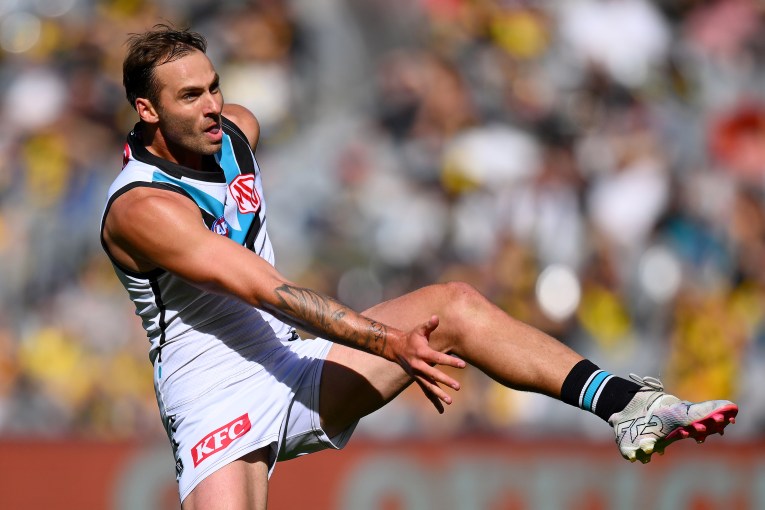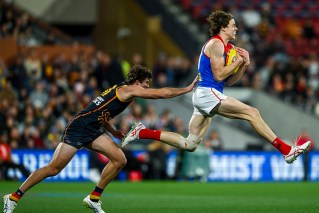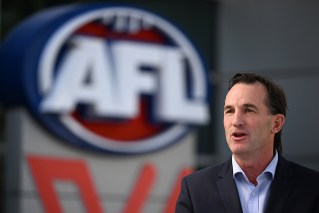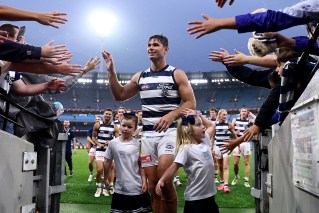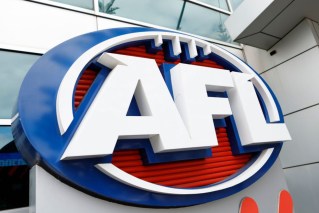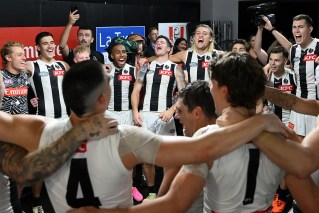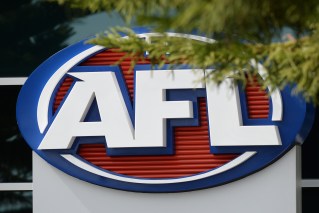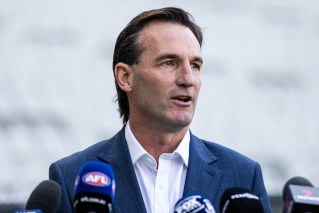AFL bans ‘third man up’, launches crackdown on rushed behind and high contact
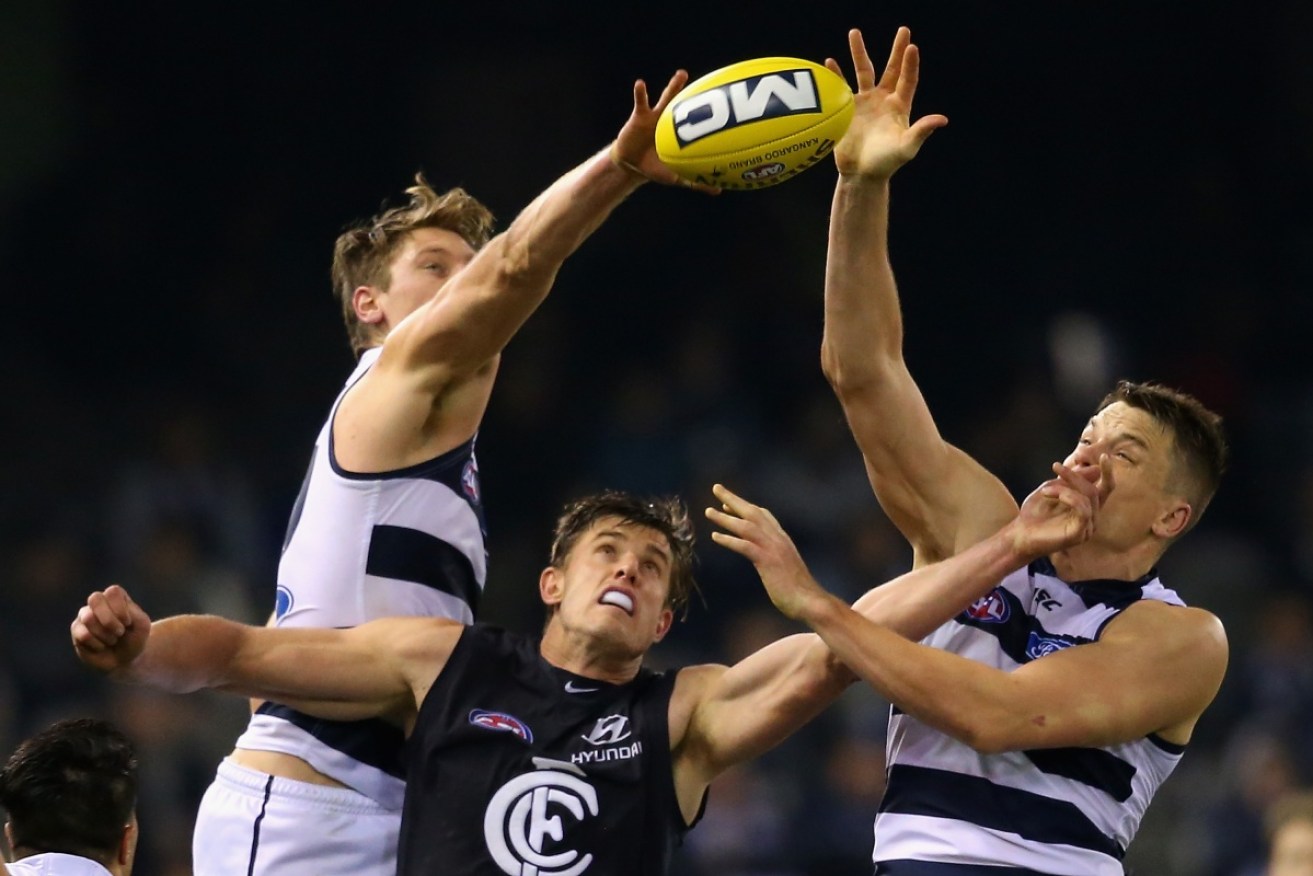
Mark Blicavs (L) goes third man up against Cameron Wood (C) and Hamish McIntosh in 2014. Photo: Getty
Some of the AFL’s top players have spoken out against rule changes being brought in by the league for next season.
Among three key rule changes, the AFL has banned the use of a “third man up” at ruck contests.
The third man up ban means only two nominated ruckmen will be allowed to contest a boundary throw-in or a ball-up around the field. The ban will commence at the beginning of the 2017 season.
Currently, any number of players may leap over the two ruckmen to influence a ball up (except at centre circle bounces) or boundary throw in contest.
The rule change caused an angry reaction Wednesday from Hawthorn champion Luke Hodge, Geelong star and 2016 Brownlow Medal winner Patrick Dangerfield and his teammate Mark Blicavs.
No 3rd man ???? Ridiculous.
— Luke Hodge (@LHodge15) December 21, 2016
What every player is thinking! #seriously #ridiculous #excepttherucks #3rdmanup https://t.co/I339yc9q5q
— Patrick Dangerfield (@dangerfield35) December 21, 2016
Officially announcing my retirement from the game effective immediately #threesacrowd @seekjobs
— Mark Blicavs (@MarkBlicavs) December 21, 2016
Blicavs was the most used third man up in the AFL in 2016 (154 times), followed by Port Adelaide’s Ollie Wines (65) and Western Bulldogs’ ace Marcus Bontempelli (63).
What’s ‘third man up’?
The AFL said in an announcement that it was concerned the role of the ruckman would be in danger if the upward trend of third man up statistics continued.
The incidence of players going third man up rose from 8.5 per cent in 2014 to 13.2 per cent in 2015.
“Eliminating the ‘third man up’ at ruck contests will support the recruitment of tall players and ensure our game continues to be played at the elite level by players of various sizes and differing abilities,” AFL football operations manager Mark Evans said.
The AFL also claimed there was no link between teams going third man up and an advantage at clearances. Umpires said it would be easier to officiate ruck contests without the third man up.
Rushed behind crackdown, high contact clarification
The AFL also announced there would be a strict crackdown on the controversial deliberate rushed behind rule, and a simplifying of the interpretation of the high contact rule.
Umpires will now judge deliberate rushed behinds using a stricter interpretation.

Joel Selwood is considered by some to be notorious for ducking into tackles. Photo: Getty
There was meant to be a crackdown on the practice in 2015, but many felt it was not adjudicated consistently from game-to-game.
The stricter interpretation will take into account how far the player with the ball is from the goal line and if that player had a chance to dispose of the ball.
Players with clear possession will be expected to keep the ball in play, Evans indicated. The official AFL rule states:
“A free kick shall be awarded against a player from the defending team who intentionally kicks, handballs or forces the football over the attacking team’s goal line or behind line or onto one of the attacking team’s goal posts”.
However umpires sometimes became confused, like in the infamous case of North Melbourne’s Michael Firrito.
For high contact, umpires will now be asked to assess if a tackle is reasonable before deciding if it should result in a high contact free kick.
“Umpires will be instructed that whether a tackle is reasonable should always be their first assessment when adjudicating high contact,” Evans said.
If a tackle is deemed reasonable then play on will be called. Play on will also be called if the player who is tackled is responsible for the high contact.
This is presumably to stop players putting themselves into positions where it is more likely they will be tackled high (e.g. ducking the head and dropping the knees).
– with AAP
